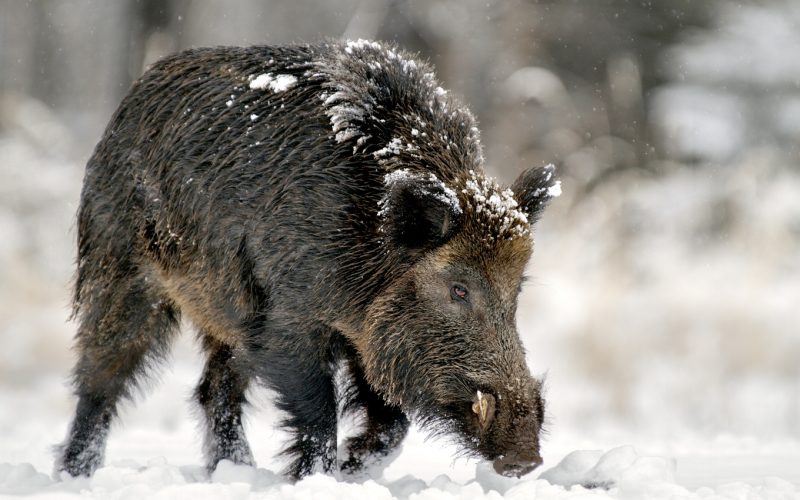
Courtesy Photo
The wild boar, a.k.a. the razorback, has been known to be a menace to landowners’ crops and wildlife.
Outside of football, there are certain hogs we don’t want to call. Colloquially called feral pig, wild hog, or razorback, Sus scrofa is known for damaging agricultural economies, water quality, native ecosystems, and endangering the public health. Razorbacks are present in all of Northwest Arkansas counties, according to the National Feral Swine Mapping System 2014 data.
They can be pretty cute prancing around the edges of a field when they’re feeling frisky, and they are good at keeping the Florida panther well-fed. Long before the University of Arkansas had a mascot, Arkansas was known for its razorbacks, named for their high, bristly-haired backbones and aggressive demeanor. Introduced to North America from European boar stock and various breeds of domestic pigs, no pig is native here. Razorback females, or sows, can have several litters of 4 to 12 piglets per year. Sometimes species which aren’t native and have high reproductive rates can take our native landscape by surprise: our vegetation hasn’t evolved to rebound from wallows and rooting, and our local wildlife often can’t adapt to increasing competition for food sources.
According to the Encyclopedia of Arkansas History and Culture, “Problems with wild hogs are numerous. They uproot plants and will eat anything they can catch.” They’re omnivores, and with their snout’s keen rooting ability, can damage fields of crops, “destroy terrestrial and aquatic vegetation, ruin water holes used by other wildlife, and contribute to erosion and siltation, which can degrade water quality. They can transmit brucellosis and other diseases to domestic animals. There have been cases in Arkansas of feral hogs transmitting brucellosis and trichinosis to humans.”
They are incredibly adaptable and capable of surviving in a wide variety of habitats. They’re also highly intelligent and have excellent senses and physical strength, able to run 35 miles per hour and weighing around 150 to 300 pounds. Boars have long tusks that are sharpened by rubbing the upper ones against the lower, making them even more capable of defending themselves.
So what do you do if you think you have razorbacks on your land? Shooting them might not work. According to the Arkansas Game & Fish Commission, “Hunting and shooting feral pigs…can chase them away from crops temporarily, but they soon return or become a problem for a neighboring landowner. Studies show at least 66 percent of a hog population must be removed each year just to prevent it from growing. Hunting has shown to reduce hog populations by only 8 to 50 percent.
The Arkansas Game and Fish Commission recognizes large-scale trapping as the most efficient and economical means currently available to reduce feral hog populations. Illegal relocation of hogs for hunting purposes has spread the problem to new areas. The shooting of individual hogs also thwarts large-scale trapping efforts by agencies because increased disturbance makes it nearly impossible to catch the whole sounder, or family group, at once.” Visit their website at AGFC.com for a listing of hog hunting locations and to download landowner’s guides to controlling feral pig populations, including corral trap plans.
Amanda Bancroft is a Master Naturalist and volunteers with her husband Ryan for their solar-powered online educational center on how to make a difference with everyday choices at: www.RipplesBlog.org.










